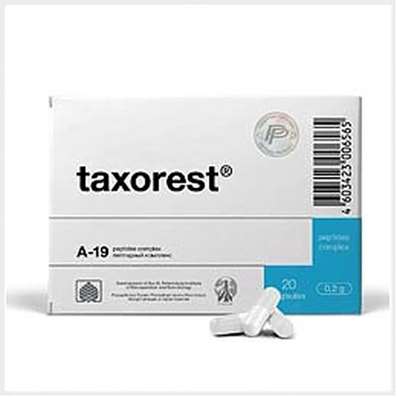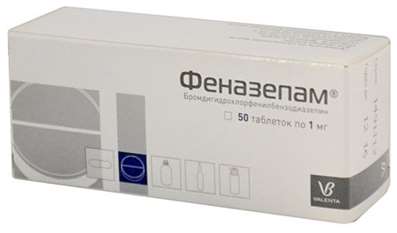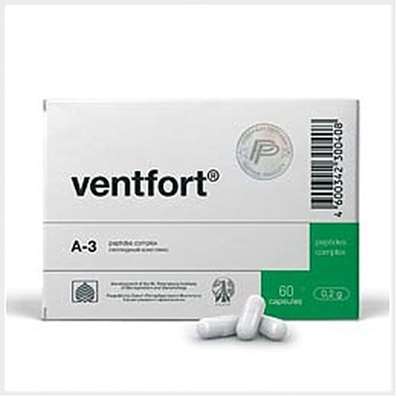Instruction for use: Triderm
I want this, give me price
Active substance Betamethasone + Gentamicin + Clotrimazole
ATX code D07XC01 Betamethasone in combination with other drugs
Pharmacological group
Glucocorticosteroids in combinations
Nosological classification (ICD-10)
B35 Dermatophytosis
Lishay Grubi-Saburo, Lichen microsporic, Ringworm, fine-spore, Microsporosis, Dermatomycosis of the groin area and smooth skin, Mycosis of the skin and nails, caused by Trychophyton, Microsporia, Ringworm, Trichophytia, Epidermophytia
B35.6 The inguinal epidermophytosis
Fungal lesions of skin folds, Dermatomycosis of the groin area and smooth skin, Mycosis of the inguinal region, Inguinal dermatophytosis, Inguinal epidermophytosis, Inguinal dermatomycosis, Mycosis of feet and large folds
B36.0 Multicolored lichen
Lichen otripeda, Leesar multicolored, Lichen pityriasis furfuracea, Pitirosporum orbiculare, Multicolored lichen, Peregrine lichen
B37 Candidiasis
Visceral candidiasis, Invasive Candidiasis, Candidiasis of the larynx, Candidiasis of the digestive tract, Candidiasis of the skin and mucous membranes, Candidiasis of mucous membranes and skin, Candidiasis of the mucous membranes, Candidiasis caused by Candida albicans,Candidomycosis,Acute pseudomembranous candidiasis, Chronic forms of candidiasis
B49 Mycosis, unspecified
Common mycoses, Visceral mycosis, Deep endemic mycoses, Keratomycosis, Cutaneous mycosis, Pulmonary mycosis, Mycosis, Mycosis eyes, Mycoses of the gastrointestinal tract, Mycosis of large skin folds, Mycosis with secondary bacterial infection, Mycoses in patients with immunodeficiency, Systemic fungal infections, Tropical mycoses, Fungal infections of the skin, Fungal lesions of skin folds, Fungal infection, Fungal skin lesions, Fungal lesions of the bronchial mucosa, Fungal lesions of the oral mucosa, Infections fungal, Infections of skin fungal, Skin mycoses, Mycosis systemic, Mycosis of the mucous membranes
L20 Atopic dermatitis
Itchy atopic eczema, Common neurodermatitis, Allergic skin diseases, Allergic skin diseases of non-infectious etiology, Allergic skin diseases of non-microbial etiology, Allergic skin diseases, Allergic skin lesions, Allergic manifestations on the skin, Allergic dermatitis, Allergic diathesis, Allergic itching dermatosis, Allergic Skin Disease, Allergic skin irritation, Dermatitis allergic, Atopic dermatitis, Dermatosis allergic, Diathesis exudative, Skin Allergic Disease, Skin allergic reaction to medicinal and chemical preparations, Skin reaction to medication, Skin and allergic disease, Acute eczema, Chronic atopic dermatitis, Exudative diathesis, Itching allergic dermatosis
L20.8 Other atopic dermatitis
Constitutional neurodermatitis, Chronic neurodermatitis, Restricted neurodermatitis, Allergic eczema, Atopic eczema, Children's eczema, Diffuse neurodermatitis, Neurodermatitis, Neurodermatitis diffuse, Neurodermatitis limited, Neurodermatitis, Dermatosis of a neurogenic origin
L23 Allergic contact dermatitis
Allergic dermatitis, Purulent allergic dermatopathies, Contact allergic reaction, Contact allergic dermatitis, Photoallergic contact dermatitis
L28.0 Simple chronic lichen
Common lichen, Chronic and simple lichen, Chronic lichen
L30.3 Infectious dermatitis
Microbial skin infections, Dermatitis with concomitant bacterial infections, Dermatitis in the presence of a bacterial infection or suspected of it, Infected eczema of external auditory canal, Secondarily infected dermatosis, Erythema migrans, Secondarily infected dermatoses , Dermatitis re-infected, Infectious dermatitis, Dermatitis infected, Dermatoses complicated by a secondary infection, Dermatoses complicated by primary and secondary infection, Dermatoses complicated by primary and / or secondary infection, Infected eczema, Infected dermatitis, Infected dermatosis, Migrating erythema, Microbial eczema, Chronic migratory erythema, Eczema is infected, Erythema Migrating, Bacterial dermatitis, Erythema migratory chronic, Superinfectant dermatitis, Necrolytic Migrating erythema
L30.9 Dermatitis, unspecified
Allergic dermatoses complicated by a secondary bacterial infection, Anal eczema, Bacterial maturation, Varicose Eczema, Venous dermatitis, Inflammation of the skin, Inflammation of the skin upon contact with plants, Inflammatory Skin Diseases, Inflammatory skin reactions, Inflammatory processes of the skin, Hypostatic dermatitis, Fungal Eczema, Fungal dermatosis, Dermatitis, Dermatitis is stagnant, Dermatitis and eczema in the anal area, Dermatitis acute contact, Perianal dermatitis, Dermatosis, Dermatosis of the scalp, Dermatosis of psoriasis, Dermatosis with persistent itching, Dermatoses, Dermatoses itchy, Other itching dermatoses, Significant eczematous manifestations, Itching with, dermatoses, Itching eczema, True eczema, Skin reaction to insect bites,Skin itching with dermatosis, Constitutional eczema, Weeping eczema, Drowsing inflammatory skin disease, Dying Infectious-Inflammatory Skin Disease, Non-allergic dermatitis, Nummular eczema, Acute contact eczema, Acute inflammatory skin disease, Acute dermatosis, Acute severe dermatosis, Perianal dermatitis, Superficial dermatosis, Subacute Contact Eczema, Simple dermatitis, Occupational dermatitis, Psychogenic dermatosis, Bubble dermatitis of newborns, Pustular eruptions, Irritation and redness of the skin, Low-flammable eczema, Dry atrophic eczema, Dry eczema, Toxic dermatitis, Ear eczema like dermatitis, Chronic eczema, Chronic dermatosis, Chronic common dermatosis, Scaly papular dermatosis, Eczema, Eczema anal region, Eczema of the hands, Eczema Contact, Eczema lichenized, Eczema Nummular, Eczema acute, Eczema acute contact, Eczema subacute, Eczematous dermatitis, Eczema-like rashes, Ecome exogenous, Endogenous eczema, Gluteal dermatitis, Restricted itchy dermatitis
Composition
Ointment for external use 1 g
Active substances:
Betamethasone dipropionate 0.643 mg
(Equivalent to 0.5 mg betamethasone)
Clotrimazole 10 mg
Gentamicin 1 mg (1000 IU)
Auxiliary substances: paraffin liquid - 50 mg; Paraffin soft white - q.s. Up to 1 g
Cream for external use 1 g
active substance:
Betamethasone dipropionate 0.643 mg
(Equivalent to 0.5 mg betamethasone)
Clotrimazole 10 mg
Gentamicin 1 mg (1000 IU)
Auxiliary substances: Vaseline - 150 mg; Propylene glycol 100 mg; Cetostearyl alcohol - 72 mg; Paraffin liquid - 60 mg; Macrogol cetostearate - 22.5 mg; Benzyl alcohol - 10 mg; Sodium dihydrogen phosphate dihydrate - 2,995 mg; Phosphoric acid - 0.03 mg; Phosphoric acid or sodium hydroxide - until pH is established; Purified water - q.s. Up to 1 g
Description of dosage form
Ointment: a homogeneous translucent ointment, from white to light yellow in a soft consistency, free of foreign inclusions.
Cream: homogeneous, soft consistency, white or almost white, free of visible particles.
pharmachologic effect
Pharmacological action - antibacterial local, antibacterial local, broad spectrum, glucocorticoid (local).
Pharmacodynamics
Combination drug for external use.
Ointment and Cream TridermŽ combine anti-inflammatory, antipruritic, antiallergic and antiexudative effect of GCS of betamethasone dipropionate with antifungal activity of clotrimazole and broad antibacterial action of gentamicin sulfate.
Clotrimazole has an antifungal effect due to a disruption in the synthesis of ergosterol, which is an integral part of the cell membrane of fungi. It is active against Trichophyton rubrum, Trichophyton mentagrophytes, Epidermophyton floccosum, Microsporum canis, Candida albicans, Malassezia furfur (Pityrosporum orbiculare).
Gentamicin is a broad-spectrum antibiotic from the aminoglycoside group. It is bactericidal and provides highly effective local treatment of primary and secondary bacterial skin infections. It is active against gram-negative bacteria: Pseudomonas aeruginosa, Enterobacter aerogenes, Escherichia coli, Proteus vulgaris, Klebsiella pneumoniae; Gram-positive bacteria: Staphylococcus aureus (coagulase-positive, coagulase-negative and some strains producing penicillinase).
Indications
Dermatoses complicated by infections caused by drug-susceptible pathogens, or suspected of such infections, including:
Simple and allergic dermatitis;
Atopic dermatitis (including diffuse neurodermatitis);
Limited neurodermatitis;
eczema;
Dermatomycosis (dermatophytosis, candidiasis, multicolored lichen), especially when localized in the groin and large folds of the skin;
Simple chronic lichen (limited neurodermatitis).
Contraindications
Hypersensitivity to any of the components of the drug;
lupus;
Cutaneous manifestations of syphilis;
chickenpox;
Herpes simplex;
Cutaneous post-vaccination reactions;
Open wounds (for ointments for external use);
Children under 2 years.
With caution: pregnancy (especially in the first trimester); Children's age (> 2 years); Long-term treatment; Application on large areas of the skin or in violation of the integrity of the skin; Use of occlusive dressings (especially in children).
pregnancy and lactation
The use of the drug TridermŽ during pregnancy is possible only if the intended benefit to the mother exceeds the potential risk to the fetus. Pregnant women should not be used on large areas of the skin or for a long period of time.
It is not known whether the components of the drug are excreted in breast milk. Therefore, with the appointment of the drug TridermŽ during lactation, the issue of stopping breastfeeding should be addressed.
Side effects
Very rarely, when using TridermŽ, burning, erythema, exudation, pigmentation and itching are noted.
Occurring with the application of local GCS (especially with the use of occlusive dressings): burning sensation, itching, dry skin, folliculitis, hypertrichosis, acne, hypopigmentation, perioral dermatitis, allergic contact dermatitis, skin maceration, secondary infection, skin atrophy, striae, sweating.
Conditioned clotrimazole: erythema, tingling sensation, the appearance of blisters, peeling, local edema, itching, hives, skin irritation.
Conditioned by gentamycin: transient skin irritation (erythema, pruritus), usually not requiring discontinuation of treatment.
Interaction
No interaction of the drug TridermŽ with other drugs (medicinal product) has been registered.
Dosing and Administration
Outwardly.
Ointment or cream should be applied a thin layer on the entire affected surface of the skin and surrounding tissue 2 times a day (morning and night). To ensure the effectiveness of treatment, the drug should be used regularly. The duration of therapy depends on the size and localization of the lesion, as well as the patient's response.
If the clinical improvement did not occur after 3-4 weeks of treatment, this may serve as an excuse for specifying the diagnosis.
Overdose
Symptoms: prolonged use of local GCS in high doses may inhibit the function of the adrenal glands with the development of secondary adrenal insufficiency and symptoms of hypercorticism, including Cushing's syndrome.
Overdose of clotrimazole with local application does not lead to any symptoms.
With a single overdose of gentamicin, any symptoms are also not expected. Long-term treatment with gentamicin in elevated doses can lead to an increase in insensitive flora.
Treatment: symptomatic. Acute symptoms of hypercorticoidism are usually reversible. If necessary, correct the electrolyte imbalance. In the case of chronic GCS toxicity, the gradual elimination of GCS is recommended.
special instructions
TridermŽ is not intended for use in ophthalmology.
Prolonged local use of antibiotics can sometimes lead to the growth of resistant microflora. In this case, as well as with the development of irritation, sensitization or superinfection in the background of treatment with TridermŽ, treatment should be discontinued and appropriate therapy prescribed. There were cross-allergic reactions with aminoglycoside antibiotics.
Any side effects that occur with the use of systemic SCS, including oppression of adrenal cortex function, can be noted even with topical application of GCS, especially in children.
Systemic absorption of GCS or gentamycin for topical application will be higher if treatment is performed on large areas of the skin or with the use of occlusive dressings, especially with prolonged treatment or in violation of the integrity of the skin. It is necessary to avoid applying gentamicin to open wounds and damaged skin. Otherwise, there may be side effects, characteristic of gentamicin in its systemic application. Appropriate precautions should be taken in such cases, especially when treating children.
With prolonged use of the drug, it is recommended to cancel it gradually.
Use in Pediatrics
Ointment. Children prescribe the drug only on strict indications and under medical supervision, tk. It is possible to develop systemic side effects associated with betamethasone. When TridermŽ, like many other topical preparations based on GCS, on extensive surfaces and / or with occlusive dressing is possible, suppression of the function of the hypothalamic-pituitary-adrenal system is possible, a decrease in the excretion of growth hormone, as well as an increase in ICP, may be observed.
Cream. Children prescribe the drug only on strict indications and under medical supervision, tk. Systemic side effects associated with the use of local corticosteroids, they may develop more often than in adult patients. These side effects include: suppression of the hypothalamic-pituitary-adrenal system; Cushing's syndrome; Growth retardation; Slowing the increase in weight; Increased ICP, manifested by bulging fontanelles, headache, bilateral edema of the optic disc.
Influence on the ability to drive vehicles and work with machinery. There is no evidence of any influence of TridermŽ on the ability to drive vehicles and work with machinery.
Form of issue
Ointment for external use, 0.5 mg / g + 1 mg / g + 10 mg / g. For 15 g or 30 g of ointment in tubes of aluminum, treated with epoxy varnish and sealed with a membrane. The tube is additionally closed by a screw-on PE cap with a perforator for the membrane. One tube is placed in a cardboard box.
Cream for external use, 0.05% + 0.1% + 1%. For 15 g or 30 grams of cream in aluminum tubes, covered with epoxy varnish and sealed with a membrane and PE screw cap. One tube is placed in a cardboard box.
Conditions of leave from pharmacies
Without recipe.
storage conditions
At a temperature not higher than 25 ° C.
Keep out of the reach of children.
Shelf life
Cream for external use 0,05% + 0,1% + 1% - 3 years.
Cream for external use 0.05% + 0.1% + 1% - 3 years.
Ointment for external use - 2 years.
Ointment for external use 0.5 mg / g + 1 mg / g + 10 mg / g - 2 years.
Do not use after the expiry date printed on the package.

 Cart
Cart





